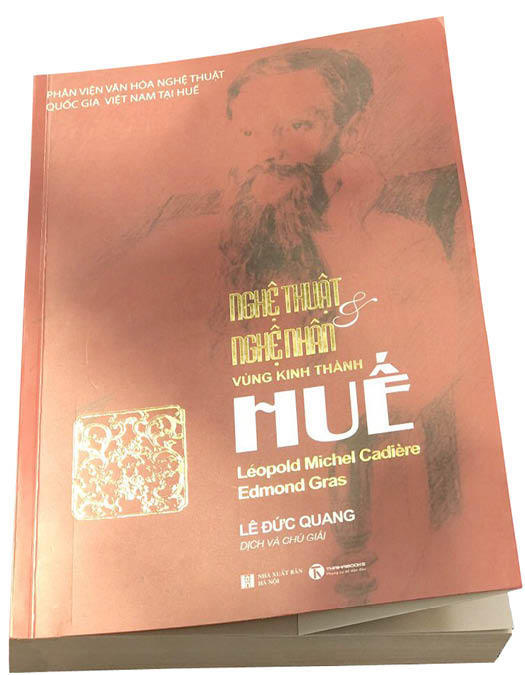
Precious documents about art and artisans
Though having no chance to build huge constructions compared with China or the Outer Realm, and the principal materials used were mainly wood, stone, copper or cloth, craftsmen, like talented artists, managed to turn rude objects into artworks.
In that center of academy and traditional art and in the east-meets-west context in the late 19th-early 20th centuries, there appeared a unique “marriage” of the Vietnamese art and the modern academic movement in the West.
The prudent handshake between Confucius intellectual mandarins from Dai Nam and its counterparts from “Great France” resulted in the cooperation based on harmony in order to develop the country as they expected.
Association des Amis du Vieux Hue (A.A.V.H) was a Western academic association that had been cultivated in Hue - the imperial capital which gathered and glued goodwill men who respected and were looking for quintessential cultural values in Hue for the development of personality and society.
Bulletin des Amis du Vieux Hue (B.A.V.H) was really an extensive and effective forum which attracted many talented and heartfelt people, both Vietnamese and French, from all walks of life to study about Hue, especially Hue fine arts, an extremely important issue.
Studies by A.A.V.H. of household objects, objects in the imperial city and worship objects at pagodas of various materials were all published on B.A.V.H.
Especially in the first special issue in 1919, L’Art à Hué officially came into being. It was later reprinted as a separate book, which was an important imprint in the process of studying the traditional art and fine arts in Hue Citadel.

Reading L’Art à Hué (L. Cadière, Ha Noi Publishing House, translated by Le Duc Quang, introduced by Nguyen Huu Thong and Truong Dinh Hang, Thai ha book, 2019)
This work was initiated on the first days of A.A.V.H. by L. Cadière, an erudite scholar with the assistance of E. Gras, a special official at the Central Treasury, and especially the participation of many talented Vietnamese artists and artisans such as Nguyen Van Nhon/Khac Nhan, Ton That Sa, professor at Ba Cong School and many excellent students graduated from Bao Ho School such as Le Van Tung, Tran Van Phenh, etc.
The lively photos and well-written pages in L’Art à Hué of the French wearing suits and the Vietnamese wearing ao dai, turbans and wooden sandals working together in the office and outside portrayed an east-meets-west spirit in academy.
In the east-meets-west context, A.A.V.H. was the meeting place of Western academic associations and a land of culture. L’Art à Hué was a work about art, but more importantly, the book itself was an artwork.
This book was an important study of art by A.A.V.H. in the period of 1914-1944, but it is still valuable nowadays after 100 years since it was printed for the first time (1919-2019).
Reading L’Art à Hué, one comes to understand the heritage of the predecessor, the difficulties they encountered and the gap for the descendant to bridge. The enthusiasm of amateur researchers from Europe more than 100 years ago fortunately met the worries of native people and they together tried to explore, confirm and introduce the values of the Vietnamese cultural heritage.
With the book, art and artisans in Hue Citadel in the early 19th century appear clearly with many typical characters, especially the urban architecture and houses and the values and symbols. The aspiration for proliferation and peace can be seen through decorative patterns in which plants, flowers, clouds, etc., can become dragons and phoenix to suit the context.
Though the translator modestly considers his translation as “a finger pointing at the moon”, his attitude and goodwill and the way he accessed the book show that he wants his readers to be proud of and love the art heritage and artists in Hue - the imperial city.
Readers then will be excited and curious to explore the art and artists in Hue Citadel in the early 19th century through the book and images in it. Certainly, it is not “the moon that deceives.”
Story and photos: Tran Dinh Hang